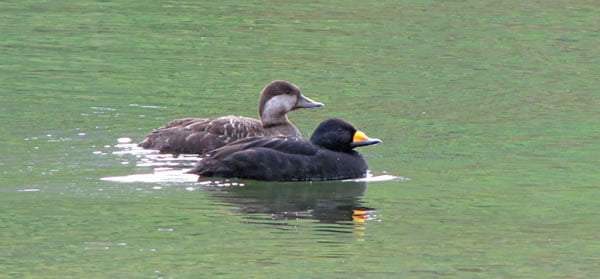Timing and Location of Acquisition of Nutrients and Energy for Clutch Formation by Black Scoters

Project Number: 70
Year Funded: 2005 (year endorsed)
Lead Institution(s): Simon Fraser University
Project Lead: Dan Esler
Collaborator(s): Paul Flint (USGS)
Location: Alaska
Focal Species: Black Scoter (Melanitta americana)
Project Description: This project addressed the question “Where and when do Black Scoter females acquire the nutrition and energy needed to form their eggs?” Objectives were to determine 1) whether females build reserves on marine areas for subsequent investment in reproduction; 2) whether herring spawn contributes a significant amount of energy and nutrition in Black Scoter eggs; 3) whether wintering, spring staging, or breeding areas are most important for acquisition of egg nutrients; and, 4) the importance of nutrients obtained on breeding areas for egg production and/or maintenance during incubation.
Project Reports:
